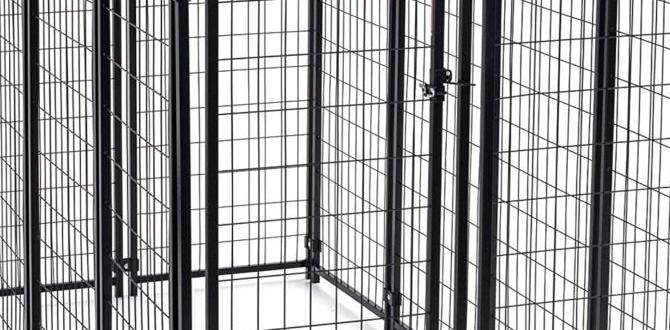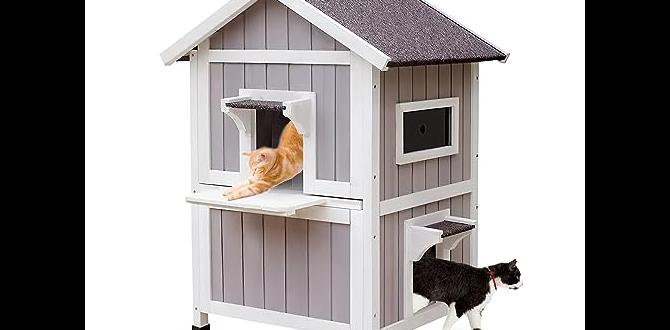How To Care For Aloe Vera Plant Outdoors Effectively

Care for Aloe Vera Plant Outdoors
Aloe vera is a hardy plant that thrives outdoors. These cheerful plants love sunlight, so place them in bright spots. Water them deeply but not too often; let the soil dry out between drinks. Did you know that overwatering is their biggest enemy? They also appreciate a well-draining pot. If you see pests, a quick rinse can help. Caring for aloe vera outdoors is simple and rewarding! Get ready to enjoy this lovely green friend!Choosing the Right Location
Importance of sunlight exposure for aloe vera growth. Evaluating soil drainage and ground conditions.Finding the perfect spot for your aloe vera is like choosing the right seat at lunch—sunny and comfortable! These plants love sunlight, so place them where they can soak up at least 6 hours of direct sun each day. But hold your horses! They also need well-draining soil. Too much moisture can make their roots sad, like a soggy sponge. Check the ground conditions by digging a little. If it’s too clay-like, it’s time for a soil upgrade!
| Factor | Details |
|---|---|
| Sunlight | At least 6 hours daily |
| Soil Type | Well-draining is key! |
| Ground Conditions | Avoid clay; you want sandy or gritty! |
Soil Requirements
Recommended soil types for optimal aloe vera health. How to amend soil for better drainage.Aloe vera plants thrive in soil that drains well. They prefer sandy or gritty soil. This allows water to flow through, preventing root rot. Mixing potting soil with sand or perlite improves drainage. Keep roots dry for healthy growth. Here’s how to prepare the best soil:
- Use a cactus mix or sandy soil.
- Add perlite for better air and water flow.
- Mix in compost for nutrients.
What type of soil is best for aloe vera?
Sandy or well-draining soil is best for aloe vera. This helps prevent overwatering. Aloe vera loves soil that dries out quickly.
Watering Techniques
Signs of overwatering vs. underwatering. Best practices for watering outdoor aloe vera.Watering your aloe vera outdoors needs care. Too much water can harm it, while not enough can dry it out. Watch the leaves closely. If they turn yellow or mushy, that’s a sign of overwatering. If they look shriveled or brown, it’s likely underwatered.
- Best practices for watering:
- Water deeply but infrequently.
- Check the soil before watering.
- Water in the morning for best results.
Remember, aloe loves sunlight and good drainage. Follow these tips, and your plant will thrive!
How often should you water your aloe vera plant?
Water every 2-3 weeks in summer and once a month in winter. Always check the soil first!
Fertilizing Your Aloe Vera
Types of fertilizers suitable for outdoor aloe vera. Frequency and timing of fertilization.Aloe vera plants need the right food to grow strong. You can use balanced fertilizers or liquid fertilizers specially made for succulents. These help your plant get the needed nutrients. It’s best to fertilize every few months during spring and summer. Avoid fertilizing in winter when the plant rests.
What type of fertilizers are best for aloe vera?
The best fertilizers for aloe vera are:
- Balanced fertilizer – Helps with overall growth.
- Liquid fertilizer – Quick absorption for fast results.
- Organic compost – Provides natural nutrients.
Following these tips will keep your aloe vera happy and healthy!
Pest and Disease Management
Common pests that affect outdoor aloe vera and how to manage them. Identifying signs of diseases and their control methods.Pests can hurt your outdoor aloe vera. Common ones include aphids and mealybugs. These tiny insects suck the plant’s juices. To manage them, you can wash the leaves with water. This helps remove pests. If plants show yellow spots or wilting, they may have diseases like root rot. Make sure the pot has good drainage. Treat rot by cutting out bad roots and replanting in fresh soil.
What are some common pests affecting aloe vera?
Common pests include aphids and mealybugs. These pests drain the plant’s energy and can lead to serious damage.
How can I tell if my aloe vera has a disease?
If aloe vera leaves turn yellow or mushy, it may have a disease. Look for signs of root rot or black spots.
Control methods for pests and diseases:
- Wash leaves with water.
- Use insecticidal soap.
- Ensure well-drained soil.
- Remove dead parts of the plant.
Seasonal Care Tips
Preparing aloe vera plants for extreme weather conditions. Winter care strategies for outdoor aloe vera.Extreme weather can be tough on your aloe vera plant. Preparing it well can protect it and help it thrive. Here are some tips to consider:
- Move the plant indoors during harsh winter storms.
- Wrap the pot with insulation for added warmth.
- Reduce watering as the plant needs less in winter.
- Place it in bright, indirect light to help it grow.
Following these steps can keep your aloe vera safe and healthy through seasonal changes.
How to protect aloe vera from frost?
Cover the plant at night or bring it inside to avoid frost damage.
Winter Care Strategies
In winter, your aloe vera needs special care. Make sure it stays dry. Aloe vera does not like cold, wet roots. Keep it in a warm spot. A sunny window is perfect for light and heat.
Propagation Methods
Techniques for propagating aloe vera outdoors. Best times for propagation and care of new plants.Want to grow more aloe vera plants? It’s easier than finding a lost sock! Use a few simple techniques. You can propagate using offsets, or those cute little pups that pop up around the base of the plant. Carefully separate them and plant them in fresh soil. The best time for this is in spring or summer when the weather is warm and friendly. Water just enough—too much can make them sulk! Follow these tips, and you’ll be swimming in aloe vera plants in no time!
| Method | Best Time | Care Tips |
|---|---|---|
| Offsets (Pups) | Spring, Summer | Water lightly |
| Leaf cuttings | Summer | Let cuttings dry |
Common Mistakes to Avoid
Frequent errors in outdoor aloe vera care and how to prevent them. Tips for better plant health and longevity.Aloe vera plants thrive in outdoor settings, but many forget a few simple things. Here are common mistakes and tips to help your plant flourish:
- Overwatering: Aloe does not like soggy soil. Water only when it’s dry.
- Too much shade: They need lots of sunlight. Place them where they can soak up the sun.
- Neglecting soil: Use well-draining soil to avoid rot.
By correcting these errors, you can keep your aloe vera happy and healthy.
How often should I water my aloe vera outdoors?
You should water your aloe vera every 2-3 weeks in warm months and less often in winter.
What are the signs of overwatering aloe vera?
Signs include yellowing leaves or leaves that feel mushy. These indicate the plant may be drowning.
Conclusion
Caring for an aloe vera plant outdoors is easy and fun. Make sure it gets plenty of sunlight and water it sparingly. Check the soil to see if it’s dry before watering. You can also protect it from extreme weather. For more tips, keep exploring articles about aloe care. Your healthy plant will reward you with lovely leaves!FAQs
Sure! Here Are Five Questions Related To Caring For An Aloe Vera Plant Outdoors:To care for your aloe vera plant outdoors, make sure it gets plenty of sunshine. Water it once every two to three weeks. You should also check the soil. If it feels dry, it’s time to water. Finally, protect it from cold weather by bringing it inside if it gets too chilly.
Sure! Please provide the question you want me to answer.
What Are The Ideal Sunlight Conditions For Growing Aloe Vera Outdoors?Aloe vera loves sunlight! You should place it in a spot that gets bright, indirect light for most of the day. Direct sun can hurt its leaves, so a little shade is good too. Make sure it gets about six to eight hours of light daily for the best growth!
How Often Should I Water My Outdoor Aloe Vera Plant, And What Signs Indicate It Needs Water?You should water your outdoor aloe vera plant about every two to three weeks. Make sure the soil is dry before you water it. If the leaves look wrinkled or droopy, that means the plant needs water. Water it slowly so the soil can soak it up. Always check the soil first!
What Type Of Soil Is Best For Cultivating Aloe Vera In An Outdoor Garden?To grow aloe vera outdoors, you need sandy or well-draining soil. This type of soil helps water flow away. Aloe vera doesn’t like to sit in wet soil. You can mix regular soil with sand or gravel. This way, your aloe vera plant will stay healthy and happy!
How Can I Protect My Outdoor Aloe Vera Plant From Pests And Diseases?To protect your outdoor aloe vera plant from pests and diseases, check your plant often. Look for bugs or yellow leaves. You can wash the leaves with water to remove dirt and pests. If you see any bugs, you can use a mild soap solution to help. Keep your plant in a sunny spot but not too wet, so it stays healthy.
What Are The Best Practices For Fertilizing Aloe Vera When Grown Outside?When you grow aloe vera outside, it’s best to fertilize it lightly. Use a water-soluble fertilizer meant for plants. You can mix it with water and feed your plant every 4 to 6 weeks in spring and summer. Make sure not to over-fertilize, as this can harm your plant. Lastly, always water your aloe vera before adding fertilizer to help it absorb the nutrients better.








